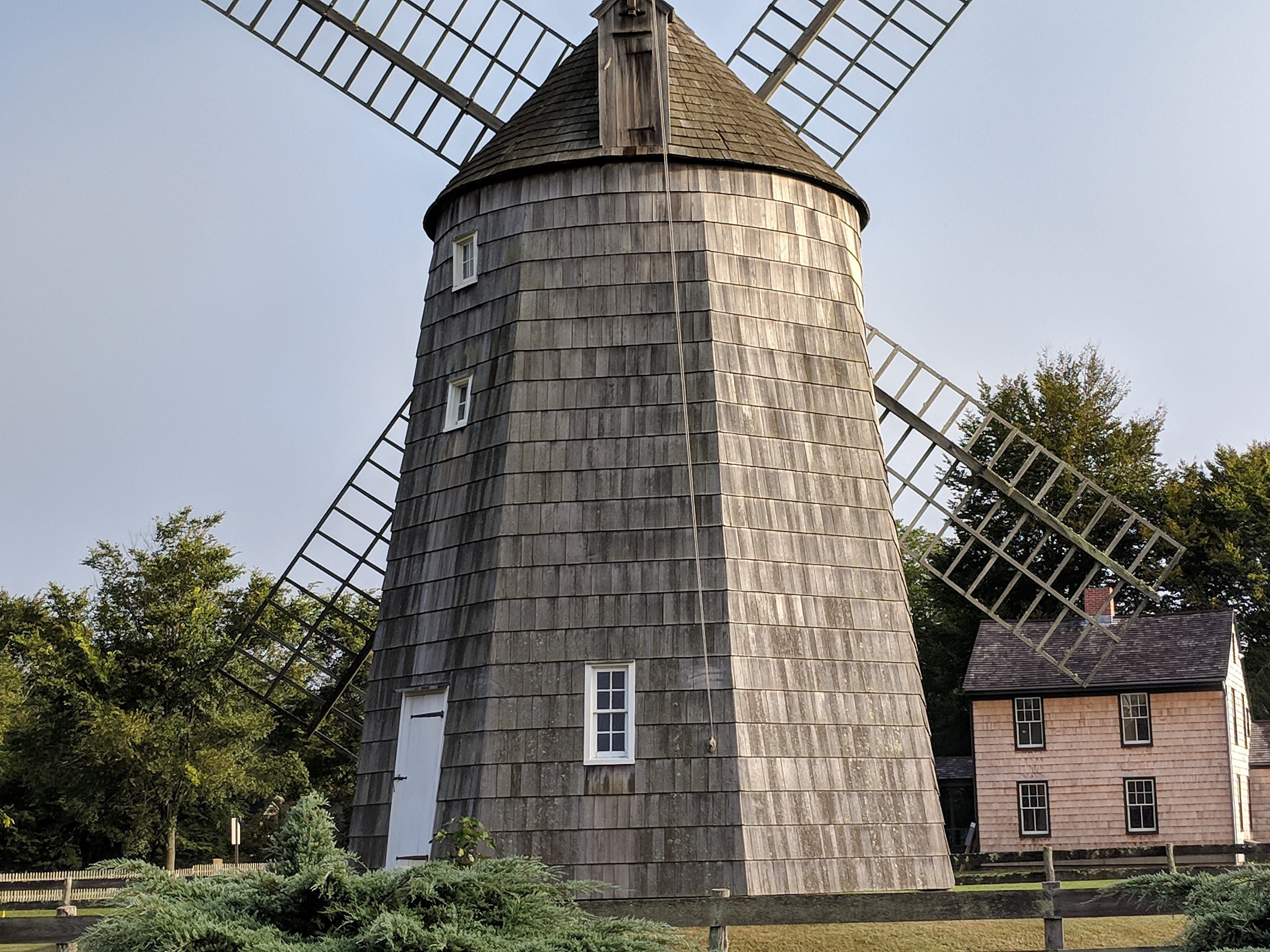John Lyon Gardiner Mill Cottage on:
[Wikipedia]
[Google]
[Amazon]
The mill cottage on the Lion Gardiner farm at 36 James Lane on the landmarked East Hampton Village green has become a museum displaying 19th and early-20th-century landscape paintings. It is a contributing structure on the NRHP East Hampton Village District, replacing the original cottage on the lot situated with the windmill and Rev James historic marker.

 The Gardiner Mill, built in 1804, is a New England style smock windmill built by Millwright Nathanial Dominy V. and operated as a
The Gardiner Mill, built in 1804, is a New England style smock windmill built by Millwright Nathanial Dominy V. and operated as a 
History
By community request of the village board, the Town of East Hampton purchased the Gardiner Mill cottage and lot, which included the 1804 Gardiner windmill, in 2014 utilizing community preservation funding. In December 2014, the village signed off on an agreement to build a replicasaltbox
A saltbox house is a gable-roofed residential structure that is typically two stories in the front and one in the rear. It is a traditional New England style of home, originally timber framed, which takes its name from its resemblance to a woode ...
style colonial era home and took sole responsibility for a museum. Terry Wallace, owner of the East Hampton Wallace Gallery had agreed to partly donate some of his collection of landscape paintings of the Hamptons (some dating to 1865), while the rest would be acquired by a sizable endowment to the museum funded by the Robert David Lion Gardiner Foundation. 
The Cottage
The mill cottage and later added extensions and dormers is a colonial-era timber-frame saltbox. It was restored to its 1880s appearance, when it was last renovated by Jonathan Thompson Gardiner. The artist Percy Moran, a nephew of renowned artistThomas Moran
Thomas Moran (February 12, 1837 – August 25, 1926) was an American painter and printmaker of the Hudson River School in New York whose work often featured the Rocky Mountains. Moran and his family, wife Mary Nimmo Moran and daughter Ruth too ...
of the Hudson River School
The Hudson River School was a mid-19th century American art movement embodied by a group of landscape painters whose aesthetic vision was influenced by Romanticism. The paintings typically depict the Hudson River Valley and the surrounding area, ...
of painting, lived there in the early-20th century and the cottage had fallen into dis-repair The decision to replace the structure with a replica was cast as a compromise to restoration.
Some nonhistorical add-ons to the original cottage, including porches and dormers, were removed, and the 1880 front porch was reconstructed. A previous kitchen would be recreated to provide an entrance and bathroom to comply with the Americans With Disabilities Act
The Americans with Disabilities Act of 1990 or ADA () is a civil rights law that prohibits discrimination based on disability. It affords similar protections against discrimination to Americans with disabilities as the Civil Rights Act of 1964 ...
. A small parking lot was placed behind the cottage so as to not impede street views.
The Mill
 The Gardiner Mill, built in 1804, is a New England style smock windmill built by Millwright Nathanial Dominy V. and operated as a
The Gardiner Mill, built in 1804, is a New England style smock windmill built by Millwright Nathanial Dominy V. and operated as a grist mill
A gristmill (also: grist mill, corn mill, flour mill, feed mill or feedmill) grinds cereal grain into flour and Wheat middlings, middlings. The term can refer to either the Mill (grinding), grinding mechanism or the building that holds it. Grist i ...
serving area farmers. The timber used for the mill was cut from trees on Gardiner's Island and it was finished on September 28, 1804, costing more than 528 pounds ($28,208 in 2018). The mill continued to operate until 1900 and retained much of its original machinery, it has the best representation of colonial style interior finish of the extant Long Island windmills and remains the best example of millwrighting craftsmanship by Nathaniel Dominy V, who also worked on other area windmills. Nathaniel Dominy is said to have given particular attention to detail in the workings of the Gardiner Mill frame and had worked the timbers to a smooth finish with a hand plane. Dominy made this extra effort partly due to this being the first of a kind, a new model windmill which was crafted to run two sets of millstones instead of one, and also because he built it for his major patron, John Lyon Gardiner. It was completely renovated in 1996 by the Village which created a state-of-the-art restoration of the Windmill.

References
{{Reflist National Register of Historic Places in East Hampton (town), New York East Hampton (village), New York Historic districts on the National Register of Historic Places in New York (state) Historic districts in Suffolk County, New York National Register of Historic Places in Suffolk County, New York Mill museums in New York (state) Saltbox architecture in New York Smock mills in the United States Windmills in New York (state)